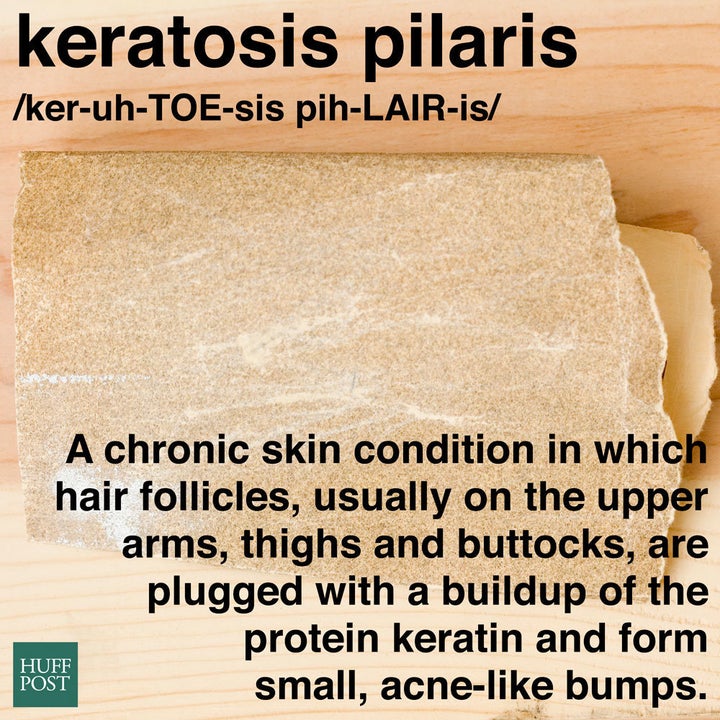"Beauty Glossary" is a HuffPost series that breaks down beauty product techniques, treatments and ingredients so you know exactly what you're putting onto and into your body.

Has your skin been extremely itchy or irritated now that it's much colder outside? When you remove those wool clothing layers, are there tiny bumps on your arms or thighs that just won't go away? If you answered "yes" to these questions, you may keratosis pilaris.
Often mistaken for acne, keratosis pilaris is a chronic skin condition that forms white or red bumps when hair follicles are plugged with keratin buildup. It usually appears on the cheeks, upper arms, thighs, outer legs, buttocks and back. According to board-certified dermatologist Linda Honet, it's an annoying ailment that's relatively harmless but without continuous treatment, it just comes right back.
While a pimple is usually more painful and not itchy, Honet explains that with keratosis pilaris you have "multiple little bumps with dry plugs in the hair follicle that can be raw or red."
"People who have family members with asthma, atopic dermatitis, eczema, hay fever or seasonal allergies have a higher instance of KP than people who do not," says Honet. "KP often does get worse in the winter because the humidity falls and the ambiance moisture in the air sucks away moisture in the skin. Then, it gets itchy."
The primary way that family practitioners or dermatologists like Honet treat keratosis pilaris is by moisturizing. "Often these are very heavy-duty moisturizers that have alpha hydroxy acids in them like glycolic acid or lactic acid because they are chemical exfoliators," says Honet. "They actually de-plug the hair follicles, smooth out the skin and impart more moisture."
As a fan of the Gwyneth Paltrow-backed skincare line Restorsea, Honet was able to self-test the effectiveness of the brand's new Revitalizing Scalp Treatment in treating KP. The derm explained that an off-label remedy like this scalp treatment is often used, especially if it does no harm to other body parts.
Honet believes what really makes this product stand out is how gentle it is in comparison to the mechanical exfoliators that are often used to de-plug hair follicles, such as bath puffs or Clarisonic brushes. She also recommends body washes that are formulated with alpha hydroxy ingredients. "Glytone makes one that's nice with glycolic acid, and Eucerin has a whole line that's called Professional Repair that's formulated for extremely dry skin," says Honet.
Maintaining a consistent and healthy skincare regimen is key to minimizing symptoms of keratosis pilaris. You'll want to use a gentle cleanser or exfoliator when bathing and not use hot water. Be sure not to scrub too hard because it can lead to more irritation. While people usually gravitate toward steamy showers and baths during this season, Honet points out that it actually strips your skin of any natural oils that you're making. Instead, use lukewarm water and keep your bathing time brief. Then, get out of the shower while your skin is still damp and apply a treatment. "It'll seal in the moisture and allow the medication to be more effective," says Honet.
Also On HuffPost: